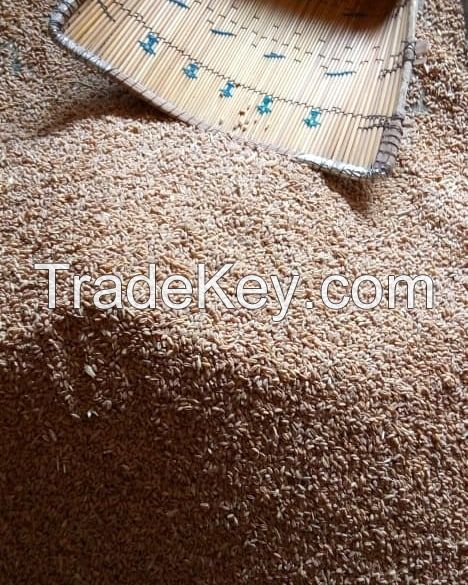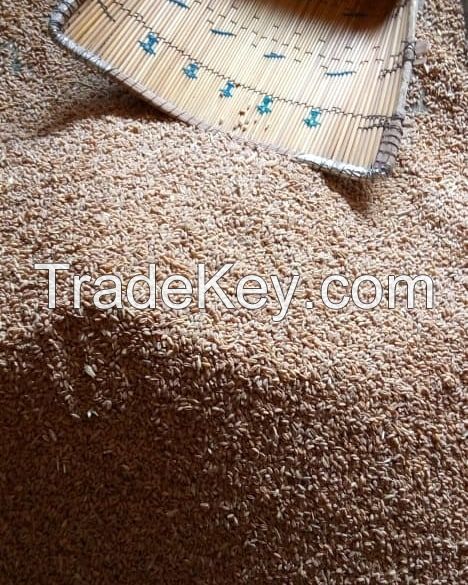详情
technical Specifications for. WHEAT GRAIN.
14.0 % max. • Organoleptic:
Bright, clear appearance, natural smell and color. • Test
weight:
74 kg/hl min. • Shrunken and broken kernels:
5.0% max. • Insect damaged kernels:
1.5% max. • Ergot :
0.05% max. • Sprouted kernels:
2.0% max. • Total damaged kernels:
4. PRODUCT SPECIFICATION 4.1 General requirements · Moisture: 14.0
% max · Organoleptic: Bright, clear appearance, natural smell and
color ·Test weight: 74 kg/hl min ·Shrunken and broken kernels: 5.0%
max ·Insect damaged kernels: 1.5% max ·Ergot : 0.05% max ·Sprouted
kernels: 2.0% max ·Total damaged kernels: 6.0% max ·Edible grain
other than wheat: 2.0% max ·Organic matter (other than edible
grains of cereal): 1.5% max · Inorganic matter: 0.05% max · Filth:
0.1% max · Live insect: Nil 4.2 Flour characteristics Flour sample
prepared from wheat grain with extraction rate of 75.0% shall have
below characteristics: ·Protein content: 11.0% min ·Wet gluten:
25.0 min ·Hagberg falling number : 230 min ·Chopin Alveograph W:
215 min P: 80 min L: 80 min If required by recipient country, Wheat
needs to be obtained from non-genetically modified varieties. 4.3
Contaminants and Toxins Wheat shall not contain contaminants and
toxins in amounts which may represent a hazard to human health.
Specific limit of some contaminants and toxins are presented in
. DEFINITIONS Broken kernels are pieces of wheat that are less than
three-quarters of a whole kernel. If the piece is more than
three-quarters of a kernel, it is considered whole. Shrunken and
broken kernels are all matter that passes through a 1.7 mm x 20
oblong-holed metal sieve. Degermed kernels are wheat whose germ has
been removed through the mechanical handling process or by insect
attack. Degermed kernels lack the greyish discolouration that is
often present with sprouted kernels. Ergot is a plant disease which
produces elongated fungus bodies with a purplish black exterior, a
purplish white to off-white interior, and a relatively smooth
surface texture. Sprouted grains are Grains in which the radicle or
plumule exceeded the seed coat bounds; grains from which the
radicle or plumule have been removed, with clearly visible
deformation and changed seed coat color in the germ area.
Heat-damaged kernels include kernels, pieces of wheat kernels that
are materially discolored and damaged by artificial drying. They
range from orange-red to very dark brown, but are not black.
Natural stain kernels are stained kernels because of contact with
natural substances such as bunt spores, soil or weeds. Mouldy
kernels are discolored, swollen and soft as a result of
decomposition by fungi or bacteria. They have mold visible to the
naked eye and may feel spongy under pressure. Damaged kernels
include kernels, pieces of wheat kernels, and other grains that are
badly ground-damaged, badly weather-damaged, diseased,
frost-damaged, germ-damaged, heat damaged, insect-bored,
mold-damaged, sprout-damaged, or otherwise materially damaged.
Edible grains include all grain other than wheat which are fit for
eaten by humans. Organic matter are all organic components (e.g
fragments of stems, leaves, ears, awns, chaff, fragments of pests,
seeds of weeds and other cultivated plants, etc) other than grains
of wheat, edible grains and filth. Inorganic matter is defined as
any inorganic component (e.g stones, dust, plastic…) Filth are
impurities of animal origin, including dead insect.


